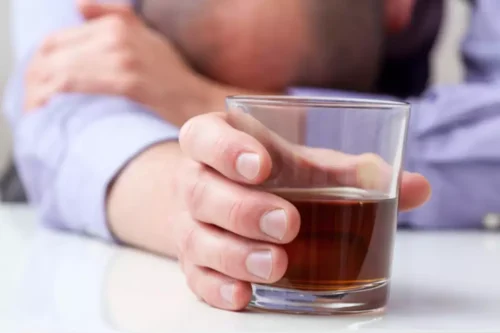Abstinence is also important for people who are pregnant, take medications that interact with alcohol or have certain genetic conditions. Ashwagandha is an herbal supplement used in traditional Indian Ayurvedic medicine. It has long been used to prevent alcohol cravings, improve immune function, and reduce stress. Naltrexone is a medication that belongs to a group of drugs known as opioid antagonists. It binds to and blocks opioid receptors in the brain, which reduces the buzz and intoxicated feeling you get from drinking alcohol. In the United States, three drugs are approved by the Food and Drug Administration (FDA) for the general treatment of alcohol use disorder (AUD), including cravings (2).
Avoid tempting situations.
For 3 to 4 weeks, write down every time you have a drink and how much you drink. Reviewing the results, you may be surprised at your weekly drinking habits. Make a table like the one below, weighing the costs and benefits of drinking to the costs and benefits of quitting. Alcohol problems come from drinking too much, too fast, or too often.
How Alcohol Impacts the Body
And I offer solutions that have helped me, and many other women, to kick alcohol to the curb for good. “People shouldn’t wake up in the morning and say, ‘Let’s see, what disease am I trying to prevent today? All these pathways in the body are linked to inflammation and oxidative stress, says Pranoti Mandrekar, a liver biologist at University of Massachusetts Chan Medical School. The metabolism of alcohol generates free radicals—essentially, unstable oxygen molecules—that damage proteins and DNA.
Sign up to receive the latest Allen Carr’s Easyway news
Positive support persons are those who recognize your goals and stand by you as you work to accomplish them. They’re the people you feel safe being vulnerable with, and you trust to hold you accountable. Maybe you’re worried that people will judge you for struggling with drinking. Or maybe you’re worried that they’ll judge you for wanting to quit.
- Family and friends can provide encouragement and support when you stop drinking.
- There is some scientific evidence suggesting acupuncture provided by a qualified practitioner can help cut alcohol consumption and lessen alcohol withdrawal symptoms (11).
- This unresolvable dilemma is why quitting drinking can be so hard.
- One of the most exciting—and sometimes intimidating—parts of becoming sober is discovering who you are without alcohol.
Choosing Drug Rehab and Addiction Treatment
- Moderate drinkers, on the other hand, tend to exercise regularly, sleep more and have healthier habits in general, which could help explain their lower death rate.
- Meditation, practiced on your own or via guided meditation, can help you learn to react less to alcohol cravings (8).
- The sudden lack of alcohol in your system can send your body into withdrawal, resulting in various symptoms.
- For this group, drinking less or quitting is essential for survival.
- Dairy products in general are good sources of calcium, vitamin D, and other vitamins and minerals that you’ll need to replenish to stay healthy and fight cravings.
That’s when you’re trying not to drink despite desperately wanting to. You’re holding on for dear life, turning your proverbial knuckles white. In https://yourhealthmagazine.net/article/addiction/sober-houses-rules-that-you-should-follow/ this post I unpack common problems that hold us back from achieving sustained sobriety.
- This is a common question that many people ask themselves, especially when trying to understand their addiction.
- It’s what you do to unwind after a long day with the kids.
- If you’re ready to stop drinking and willing to get the support you need, you can recover from alcoholism and alcohol abuse—no matter how heavy your drinking or how powerless you feel.
- Acknowledge what sparked your desire to drink and hone in on that trigger.
- People in recovery who resume drinking after a period of sobriety will almost immediately pick up where they left off—even if they have been sober for years.
A doctor can assess whether your body can safely manage the withdrawal process or if you’ll need medical monitoring and assistance. Simply being here, reading tips on how to quit drinking, considering the possibilities of your future is a positive first step. Let’s get you even closer to finding new hope and life in sobriety. If you’re ready to address your drinking, don’t be afraid to reach out for help. It’s much easier to make positive changes when you’ve got help and support from other people.
The three basic steps of urge surfing:
It’s important to acknowledge that everything you try won’t be right for you. Keep trying until you find the activities that resonate with your passions and ultimate wellness goals. Eliminating your access to alcohol is crucial, especially in the early days of sobriety. There will be temptations around you that you can’t control—so focus on what is in your control. It’s what sober house you do to unwind after a long day with the kids.
Main Content
It ends up as torture and misery, and ‘old habits’ die hard but as we explain this is not a habit. You’ve been drawn to this page for a reason – perhaps you’re dependent on alcohol or justwant to change your drinking habits and cut back. We’ve rounded up our top tips to give upalcohol and start on your journey. If you are drinking alcohol every day and notice unpleasant withdrawal symptoms when you are not drinking, please do not stop drinking suddenly. It’s important you make contact with your local treatment service to arrange a safe, medically supervised detox.
These thoughts, feelings, sensations, and beliefs are not necessarily negative. You may drink to avoid certain feelings, for instance, but you also may drink to enhance certain feelings. As your cravings for alcohol become more manageable, you may decide to try reintroducing situations that previously triggered your temptation to drink. They could be family, friends, significant others or mentors.












